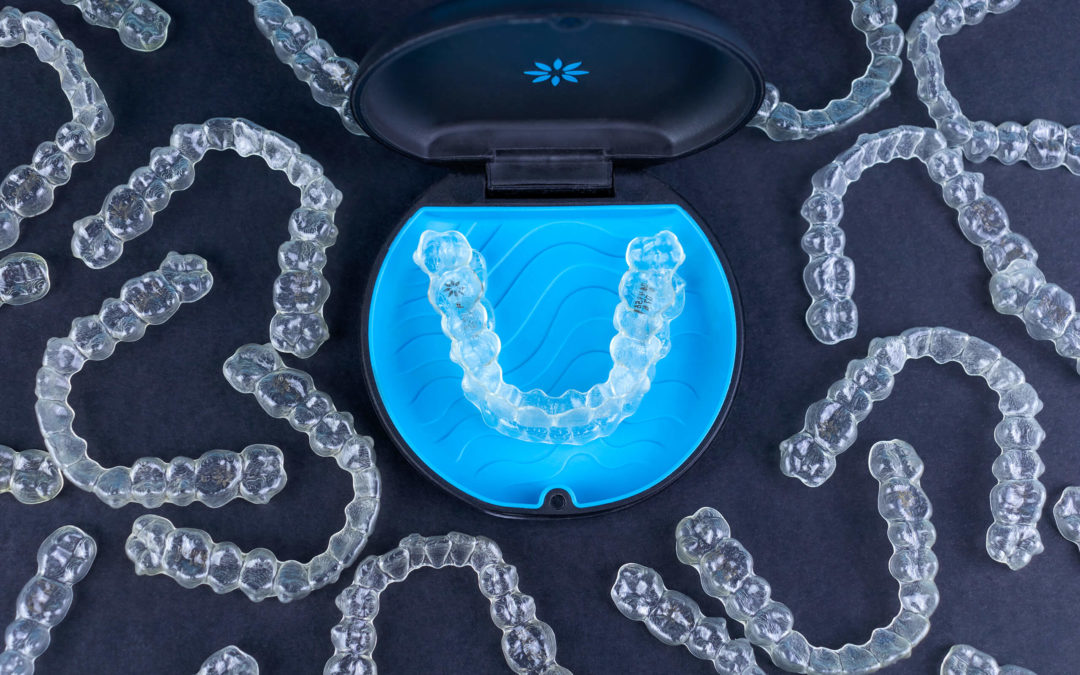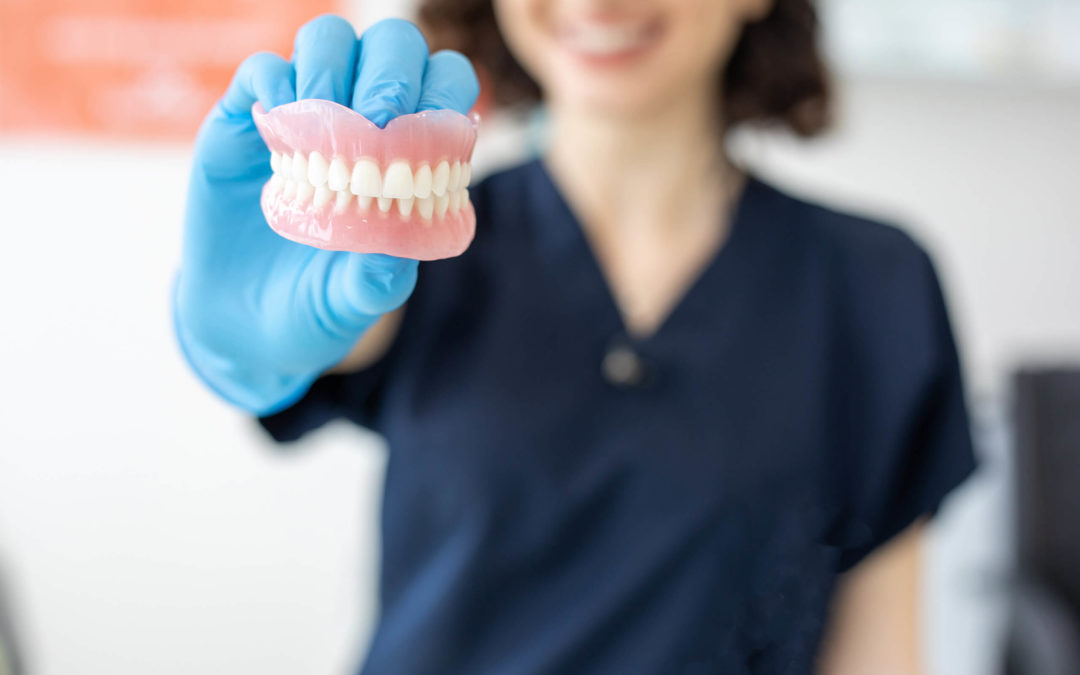You may have seen the commercials and advertisements for years and wondered, “Am I a candidate for Invisalign? How will the dentist know if Invisalign would work for me? I wonder if traditional braces would make more sense for me. Are my teeth too misaligned for Invisalign?”
You likely have many questions about the procedure, many of which are based on myths about Invisalign treatment. Invisalign, which was approved by the FDA in 1998, can be used to facilitate a drastic improvement in smiles for a great majority of people.
However, it is true that Invisalign alone is not ideal for everyone. In some cases, traditional braces, along with possibly oral surgery, would be required.
How Invisalign Works
Invisalign treatment involves using a series of clear aligners to gradually shift your teeth into the optimal positions.
When you schedule a consultation with Dr. Alkass to see if you are a candidate for Invisalign, he will analyze the quality of your teeth and gums, and we will obtain details about your preferences, habits, and dental history. In addition to a visual examination, your consultation will likely include X-ray or 3-D imaging to obtain a complete profile of your mouth.
If you decide that Invisalign is right for you, these records will be sent to Invisalign for your personalized treatment plan. Technicians there will use these records to create a 3-dimensional model of your teeth to simulate the progression of the treatment. A series of clear aligners will then be created for you based on this simulation.
Each aligner is used for one to two weeks before it is swapped for the next aligner in the series. The aligners will become progressively straighter as your teeth shift into position. The typical Invisalign treatment lasts about 9 months, and most patients will go through about 35 aligners.
You can remove the aligners to eat, as well as brush and floss your teeth. However, patients are advised to wear the aligners for about 23 hours per day otherwise. If not, it will take longer for you to see results.
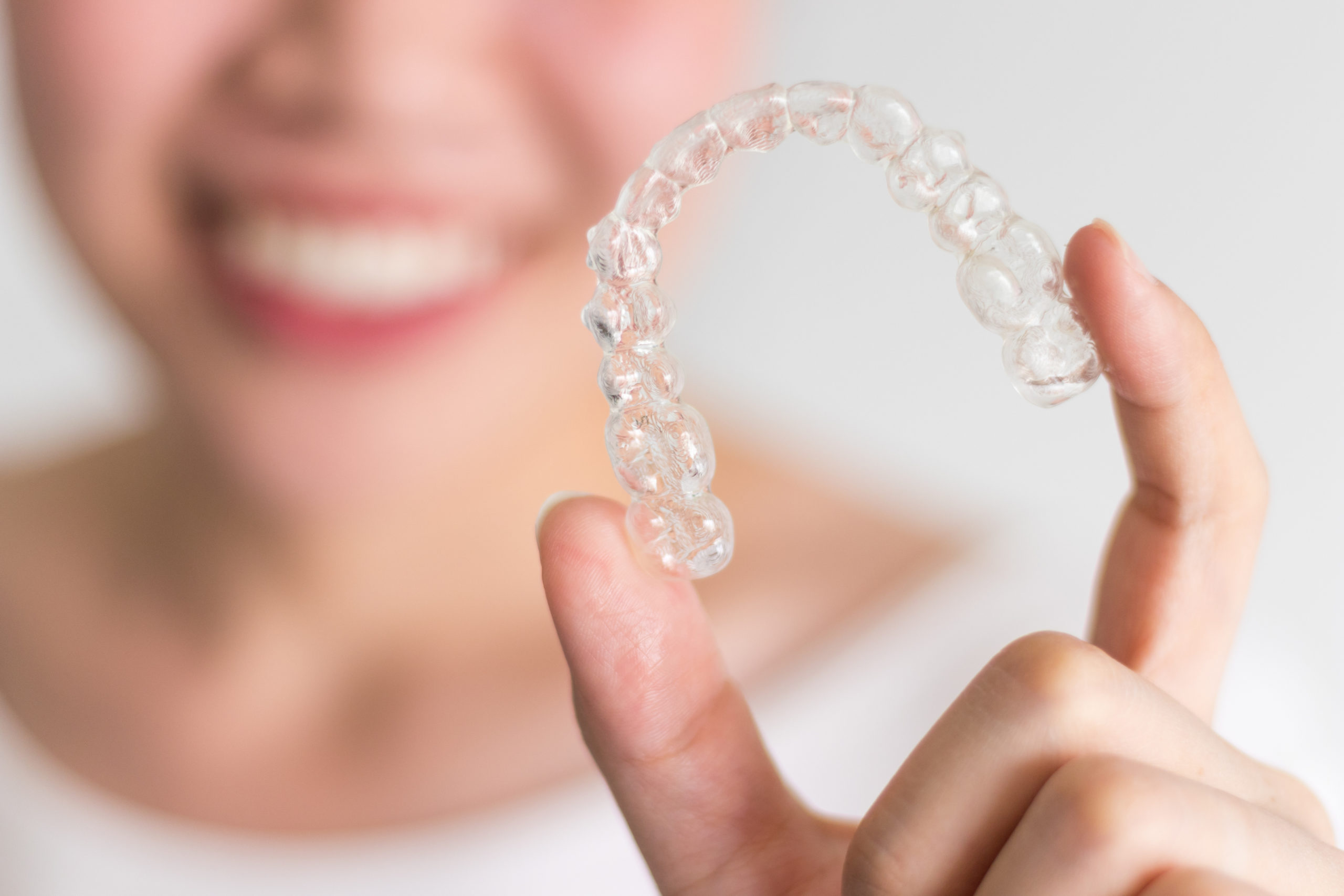
Invisalign uses a series of clear aligners to gradually shift teeth into place.
How We Would Determine if You are a Candidate for Invisalign
Factors that impact whether or not you are a candidate for Invisalign include your age and current structure of your teeth.
Most patients who are looking for tooth straightening have one or more of the following scenarios:
- Overbite: The upper front teeth close in front of the lower teeth.
- Underbite: The lower teeth protrude past the upper front teeth.
- Crossbite: The upper and lower jaws don’t line up.
- Gap teeth: There is extra space between teeth.
- Open bite: The top and bottom teeth don’t meet.
- Crooked teeth: There isn’t enough room in the jaw for teeth to fit normally.
- Generally straight teeth: You are simply looking for a more perfect smile.
- Mix of baby and permanent teeth: Children could use early orthodontic treatment to help ensure a straighter smile as their adult teeth grow in.
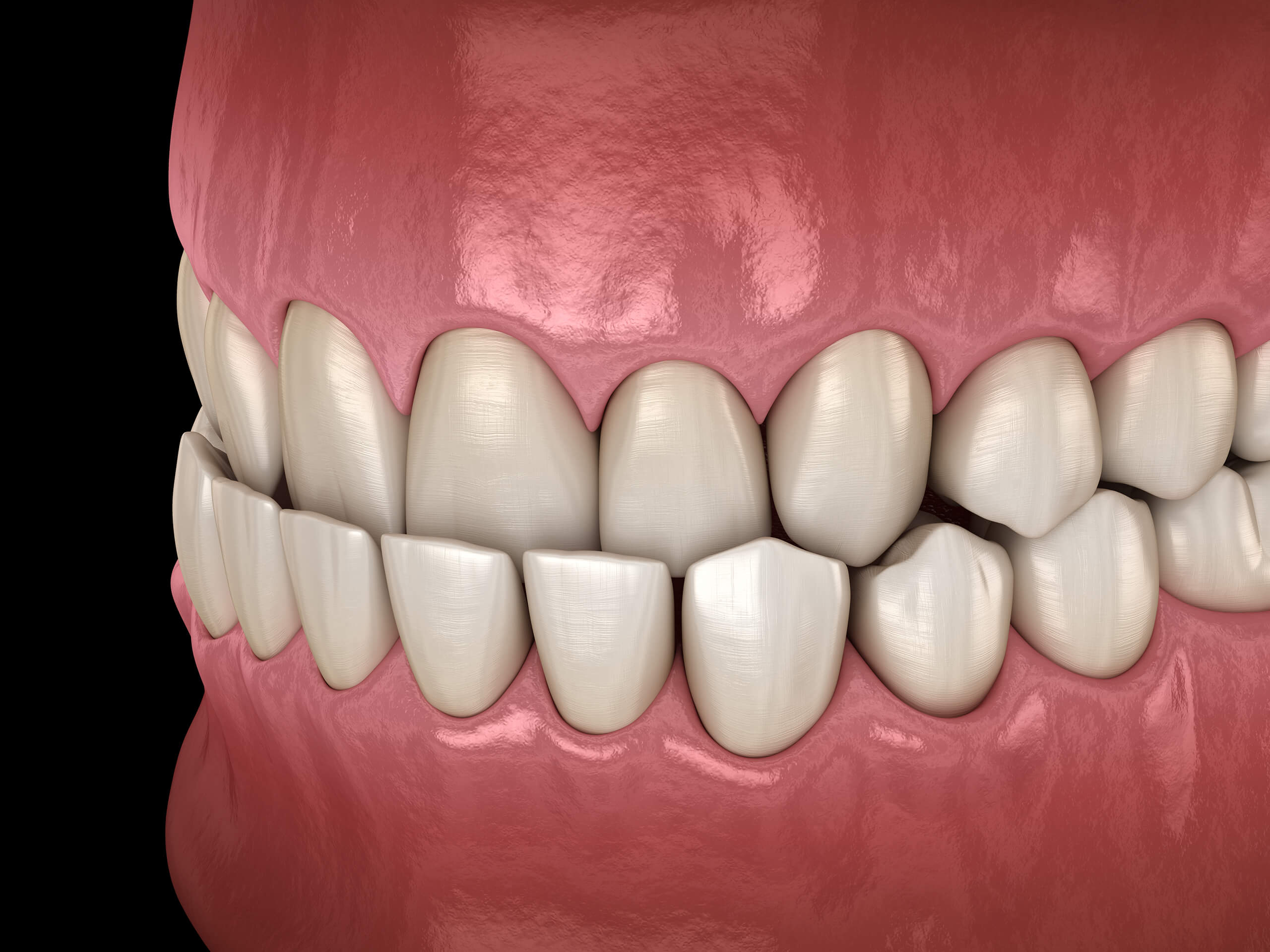
An underbite, as shown here, may need to be surgically corrected before you can obtain traditional braces. In some cases, mild underbites, overbites, and crossbites can be corrected with Invisalign instead.
Invisalign & Overbites, Underbites, Crossbites
Many patients ask us if Invisalign can be used for overbites or underbites. If you have a slight overbite, underbite, or crossbite – or even a combination of two of these – we may be able to correct it with Invisalign. Clearly, we would have to see you in person to give you an official assessment, but generally this is often possible.
However, if you have more significant overbites, underbites, or crossbites, Invisalign treatment alone might not correct the issue. You may need traditional braces. If that’s the case, we can recommend an orthodontist or dentist in the Waterford area for braces.
Additionally, in some cases, an oral surgeon would need to shift your jaws into the optimal positions before you can get braces. We know many oral surgeons in the Pontiac area who specialize in jaw realignment. We will go over all of this with you during your consultation with Dr. Alkass.
Open Bites
Unlike crossbites, underbites, and overbites, Invisalign can frequently be used to treat open bites. As the clear aligners shift your teeth into their correct positions, this can naturally correct the open bite.
However, you may need to see an oral surgeon if your open bite is due to an overbite or underbite. If the open bite is simply due to misaligned teeth, Invisalign can help.
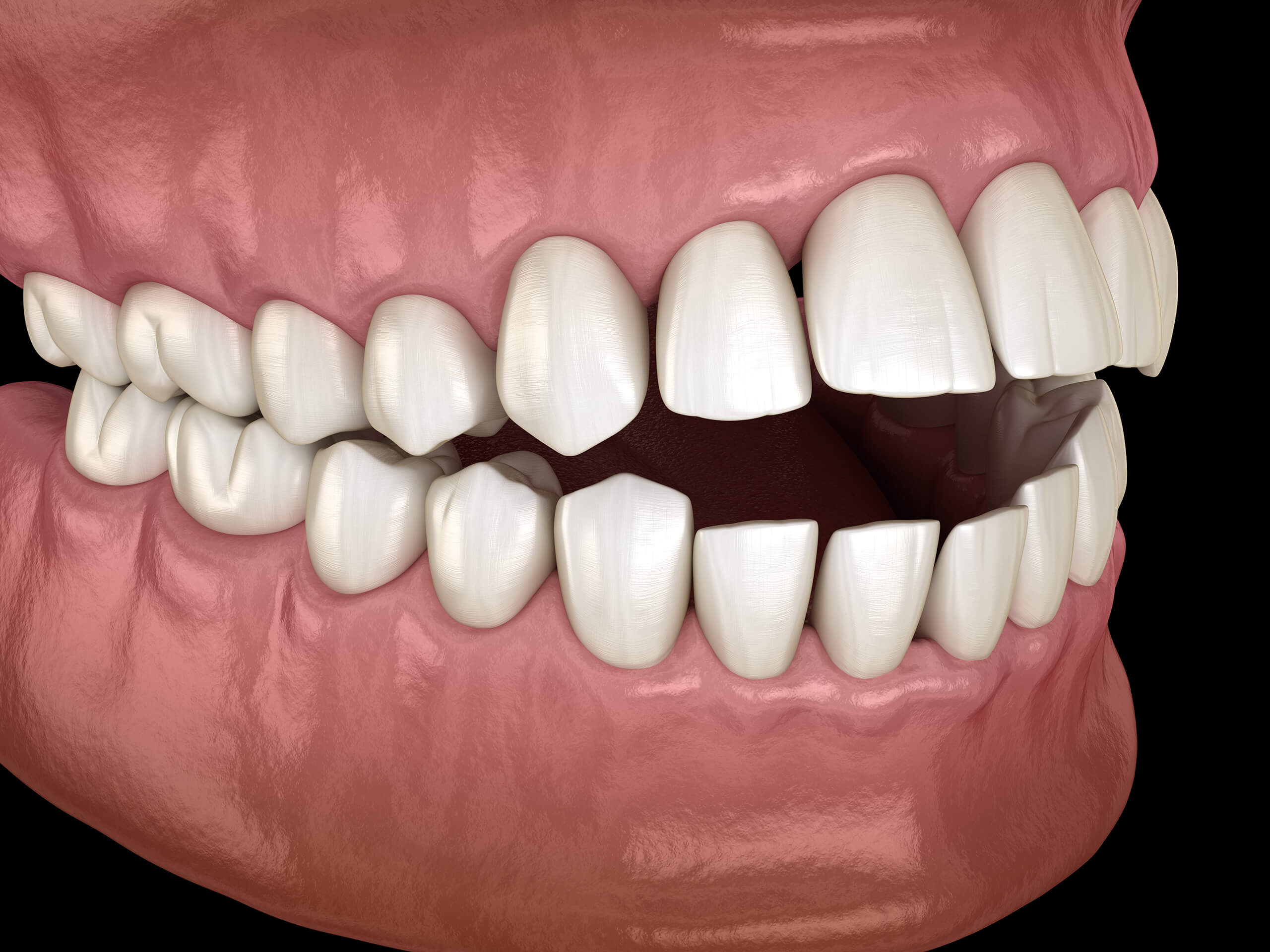
As long as there are no significant jaw alignment issues, Invisalign may be an option to correct an open bite by straightening the teeth.
Gapped Teeth
Invisalign treatment, which typically lasts about 8 months, can be used to correct most types of tooth gaps. For larger gaps in your teeth, however, treatment may need to continue for closer to two years. To help facilitate proper movement, Dr. Alkass may attach composite material to affected areas to ensure that the teeth shift into the correct positions once the aligners start to work.
If you do have gaps, it’s important to get those tooth gaps filled as soon as possible. If you have gaps in your teeth, food particles may get trapped in between the teeth, eventually leading to cavities and possibly gum disease. Fortunately, Invisalign treatment is an invisible, simple, relatively painless solution that can correct this issue.
Crooked Teeth & Generally Straight Teeth
Invisalign is especially effective at correcting crooked teeth, especially if there are no jaw issues involved. The aligners place gentle pressure on the teeth to shift them into place over time, resulting in a straighter smile.
One of the myths out there is that Invisalign is ideal for only slightly crooked teeth, but that’s simply not the case. Invisalign can correct very crooked teeth as well. It may take a little longer, but the wait will be well worth it when you can smile with greater confidence in the future.
Preemptive Tooth Correction
As your child’s permanent teeth begin to grow in, you can usually tell pretty quickly if they’re not coming in perfectly. A well-kept secret is that Invisalign tooth aligners can be used to essentially guide teeth into position as they grow.
We find this is an excellent option for many reasons, including the prevention of years of insecurity, cavities, bite problems, speaking problems, and more. This solution can also be more affordable than having to pay for braces or oral surgery in the future.
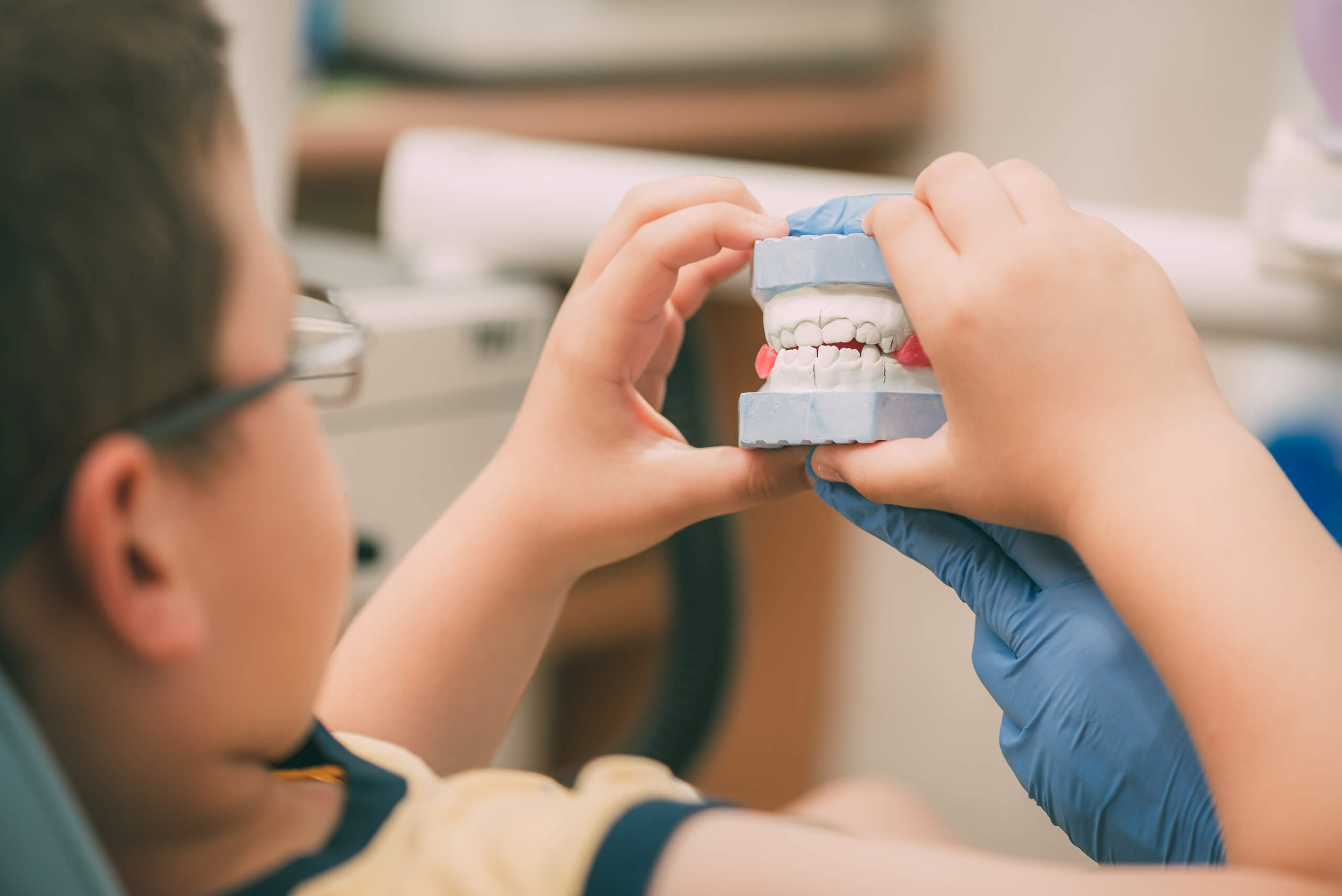
Invisalign clear aligners may help correct a child’s teeth early on in life, which can prevent future problems.
Schedule a Consultation to See if You are Eligible for Invisalign Treatment
The above information is a broad overview to help you understand terminology and whether or not you may be a candidate for Invisalign. Each case will be different depending on the structure of your mouth, your preferences, and your overall health.
For a personalized assessment, schedule an appointment to see Dr. Alkass by calling our dental office, located on Voorheis Road in Waterford. You may also send us a message through our Alkass Dental website for more information.

